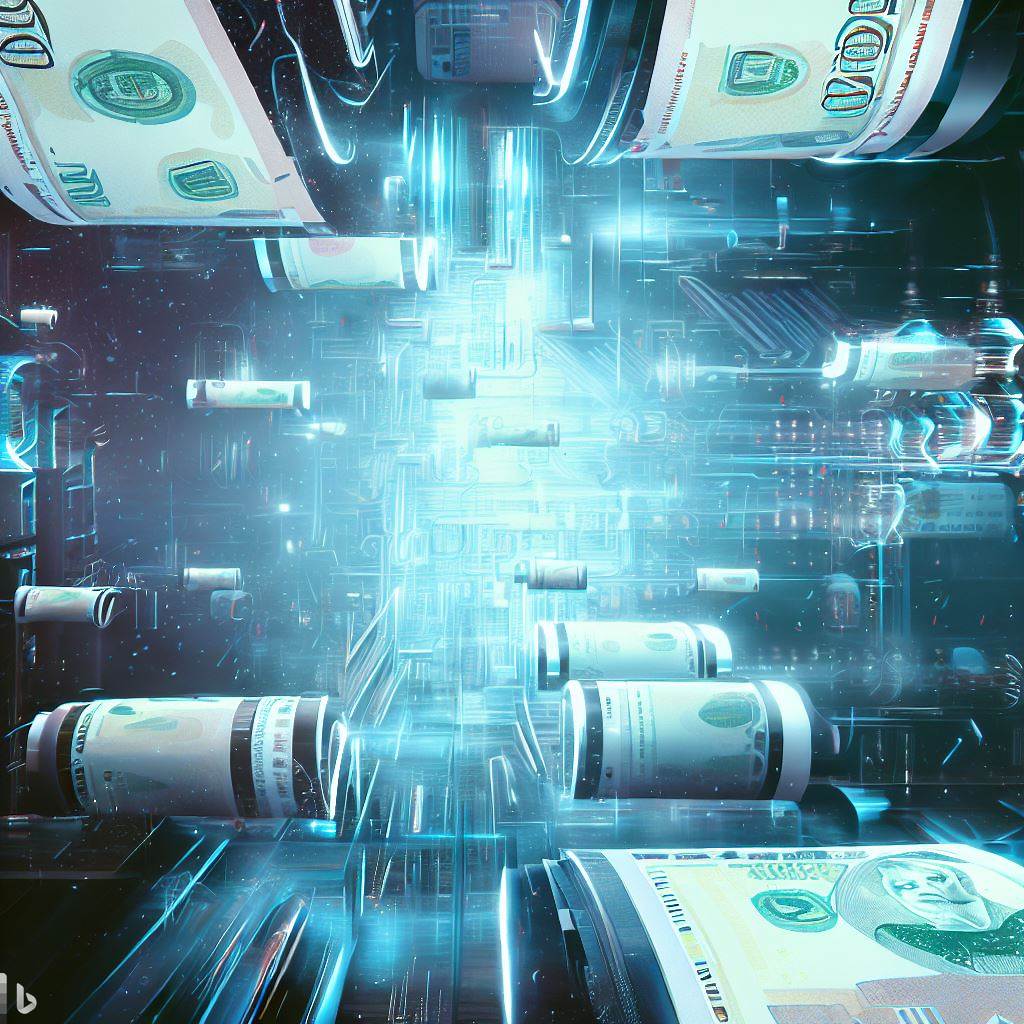What is the NFT Royalties Debate and Why is it Important?
The NFT Royalties Debate is an ongoing discussion about the potential for creators to receive royalties from the sale of their Non-Fungible Tokens (NFTs). This debate is important because it has the potential to revolutionize the way creators are compensated for their work. NFTs are digital assets that are unique and cannot be replicated, making them ideal for digital art, music, and other creative works. If creators are able to receive royalties from the sale of their NFTs, it could provide them with a new source of income and help to ensure that they are fairly compensated for their work. This could also help to create a more equitable and sustainable creative economy.
How Can Artists Benefit from NFT Royalties?
NFT royalties are a great way for artists to benefit from their work. By creating an NFT, artists can receive royalties from the sale of their artwork, as well as from any subsequent sales of the NFT. This provides artists with a steady stream of income, allowing them to focus on their craft and create more art.
NFT royalties are also beneficial for artists because they can be used to fund future projects. By receiving royalties from the sale of their artwork, artists can use the money to purchase supplies, hire assistants, or even invest in marketing and promotion. This can help them reach a wider audience and increase their chances of success.
Finally, NFT royalties can help artists build a reputation and establish themselves as professionals in the art world. By receiving royalties from their artwork, artists can demonstrate their commitment to their craft and show that they are serious about their work. This can help them gain recognition and respect from other artists and art collectors.
Overall, NFT royalties are a great way for artists to benefit from their work. By receiving royalties from the sale of their artwork, artists can receive a steady stream of income, fund future projects, and build a reputation in the art world.
What Are the Pros and Cons of NFT Royalties?
Pros of NFT Royalties:
1. Increased Revenue: NFT royalties offer creators a new way to generate revenue from their work. This can be especially beneficial for independent artists who may not have access to traditional royalty streams.
2. Transparency: NFT royalties are transparent and easy to track, allowing creators to know exactly how much they are earning from their work.
3. Ownership: NFT royalties give creators ownership over their work, allowing them to control how it is used and distributed.
Cons of NFT Royalties:
1. High Fees: NFT royalties come with high transaction fees, which can eat into creators’ profits.
2. Limited Reach: NFT royalties are still relatively new and not widely adopted, meaning that creators may not be able to reach as many potential buyers as they would with traditional royalty streams.
3. Volatility: The value of NFTs can be volatile, meaning that creators may not be able to predict how much they will earn from their work.
What Are the Legal Implications of NFT Royalties?
The legal implications of NFT royalties are complex and varied. It is important to understand the legal implications of NFT royalties before entering into any agreement.
NFT royalties are typically paid to the creator of the NFT, and the terms of the agreement will determine how the royalties are paid. Generally, royalties are paid in the form of a percentage of the sale price of the NFT. The creator of the NFT will also typically receive a portion of the proceeds from any subsequent sales of the NFT.
In addition to the payment of royalties, the creator of the NFT may also be entitled to certain rights, such as the right to control the use of the NFT, the right to receive a portion of any profits generated from the sale of the NFT, and the right to receive a portion of any profits generated from the sale of derivative works based on the NFT.
It is important to note that the legal implications of NFT royalties may vary depending on the jurisdiction in which the agreement is made. It is therefore important to consult with a qualified attorney to ensure that all legal requirements are met. Additionally, it is important to ensure that all parties involved in the agreement are aware of their rights and obligations under the agreement.
Recent Developments
- The battle between zero-fee non-fungible token (NFT) marketplace Blur and leading competitor OpenSea has intensified as both platforms vie for market share among NFT creators. Recently Blur published a blog post aimed at NFT creators that laid out the differences in royalty payment options between its platform and OpenSea.In November, it expanded royalties to permission NFTs and a month later began enforcing a minimum royalty fee of 0.5%. The platform said that because of conflicting rules, artists can’t earn royalties on both OpenSea and Blur simultaneously and that it recommends that creators block their tokens from being listed on OpenSea. (Cam Thompson, Feb 2023)
- Today, creators can’t earn royalties on Blur and OpenSea at the same time. OpenSea sets royalties to optional on these collections, and Blur enforces minimum 0.5% royalties (the seller can opt-in to higher royalties as well). Option 3 (Recommended) – Block OpenSea: Our preference is that creators should be able to earn royalties on all marketplaces that they whitelist, rather than being forced to choose. This option will only be recommended until Option 4 becomes available.Option 4 – Don’t block either Creators that whitelist both OpenSea and Blur should be able to earn royalties on both platforms. Maintaining price competitiveness is critical to prevent traders from shifting to fully zero royalty marketplaces. (Blur Blog, Feb 2023)
- The nonfungible token (NFT) marketplace Blur has seen its trading volumes and total sell-side liquidity skyrocket since conducting an airdrop on Feb. 14. Blur’s incentive program and advanced NFT trading features are causing users to shift to the platform. In its current state, BLUR is similar to UNI, which puts it at a disadvantage because the market has moved on to concepts of real yields — for example, GMX and SUSHI (SUSHI) — or other innovative value accrual methods — like Curve’s voting escrow model — that encourage buying. Blur is well-positioned to capture a huge market upside, especially considering OpenSea’s last raise in January 2022 valued the company at $13.3 billion. The views, thoughts and opinions expressed here are the authors’ alone and do not necessarily reflect or represent the views and opinions of Cointelegraph. (Nivesh Rustgi, Feb 2022)
- Over $1.8bn worth of royalties have been paid out to creators of Ethereum-based NFT collections. This move happened despite the fact that DeGods’ founder, Frank, has defended royalties multiple times on Twitter, and he still believes that royalties are the best incentive-alignment mechanism between NFT collection operators and holders. While royalties have proven to be a lucrative revenue stream for collection owners, they are unenforceable at the smart contract level as demonstrated by the rise of royalty-free marketplaces. And while BAYC only generated $2.2mn in primary sales when they launched in May 2021, the collection has since earned Yuga Labs $54m in secondary sales revenue by way of BAYC’s 2.5% royalty on every transaction. This approach would simply gate-keep access to that resource based on whether the NFT owner paid a royalty. By publicly ostracizing those who leverage royalty-free exchanges, it is possible that buyers migrate back to exchanges that implement royalties in the hopes of preserving the utility of their NFT. (Sal Qadir, Oct 2022)
- In late August, non-fungible token (NFT) marketplace X2Y2 stopped requiring buyers to pay royalties on the platform. In the world outside NFTs, you might have heard of musicians earning royalties on people using or playing their music, or that authors earn a percentage of sales of their books as royalties. Les Borsai, co-founder and chief strategy officer of fintech firm Wave Financial told CoinDesk that NFT royalties, which alleviate some of the pain points in the traditional art world that Web3 sought to fix, are now back in the limelight as platforms nix their royalty requirements. The move to make royalties optional isn’t just impacting creators. According to daily trading volume data from Dune Analytics, from August 26, the date X2Y2 said it would make royalties optional, to today, the volume on X2Y2 has fallen from 11,540 ETH to 547 ETH – or $18,971,298 to $903,304. As creators continue to see the impacts of platforms dropping royalty requirements, they may take on innovative approaches to attempt to standardize royalties, something that sits at the heart of the Web3 ethos that has fueled the rise of NFTs. (Camp Thompson, Nov 2022)
- After months of silence, the largest non-fungible token exchange, OpenSea, announced it is taking the middle road on “royalties” paid to NFT creators. It began a core part of NFTs’ value proposition: You only need to hear so many accounts of artists who starve as their body of work increases in value to see why royalties, paid out in secondary markets, would be attractive. Brokerage Firm Bernstein Says NFTs Are Not Dead “In our opinion, by far the better option is for existing creators to explore new forms of monetization and alternative ways of incentivizing buyers and sellers to pay creator fees, and to ensure that future collections enforce creator fees on-chain,” Finzer, the OpenSea CEO, wrote. Although there are strong arguments for indefinite creator fees, it was always unsustainable for artists to rely on exchanges to honor this system. That’s what crypto has always been about. (Daniel Kuhn, Nov 2022)
- While several non-fungible token (NFT) marketplaces have recently shifted to royalty-optional models, one platform is introducing a standard to ensure NFT creators continue to get paid. Solana-based fine art NFT marketplace Exchange. Alex Fleseriu, CEO of Exchange Art, told CoinDesk that because the platform was originally built for artists “exploited” by the lack of set royalties in the fine art world, it remains motivated to help artists more fairly earn their share in Web3. We are responsible for building tools that creators need to make a living.” In October, Solana-based platform Magic Eden followed with an optional royalties structure, and most recently, LooksRare stopped enforcing royalties, instead sharing a 25% protocol fee between the platform and artists. While some platforms are doing away with royalty requirements, others are modifying their structures to support creators. (Cam Thompson, Nov 2022)
RECENT BLOGS
Lessons from the FTX Collapse
Lessons from the FTX Collapse The FTX collapse is a major blow to the crypto industry. It is a reminder that the industry is still in its early stages and
De-freezing bank accounts of crypto P2P traders: A Legal primer
De-freezing bank accounts of crypto P2P traders: A Legal primer Introduction Peer-to-Peer (P2P) crypto transactions executed by Indian traders have reportedly increased significantly in the last few years. These P2P transactions
FIU Registration of VDA Service Providers
FIU Registration of VDA Service Providers Introduction Regulatory landscape for cryptocurrencies i.e. virtual digital assets (VDAs) has significantly evolved in India in the last two years. Though a VDA
Are Payment gateways ‘reporting entities’ under PMLA?
Are Payment gateways 'reporting entities' under PMLA? Introduction Should a word or a phrase defined similarly in two different statutes be interpreted differently? Hon’ble Delhi High Court has answered this
An Overview of DAO Legal Wrappers
An Overview of DAO Legal Wrappers Exploring the Benefits of DAO Legal Wrappers for BusinessesBusinesses are increasingly turning to decentralized autonomous organizations (DAOs) to take advantage of the many benefits





